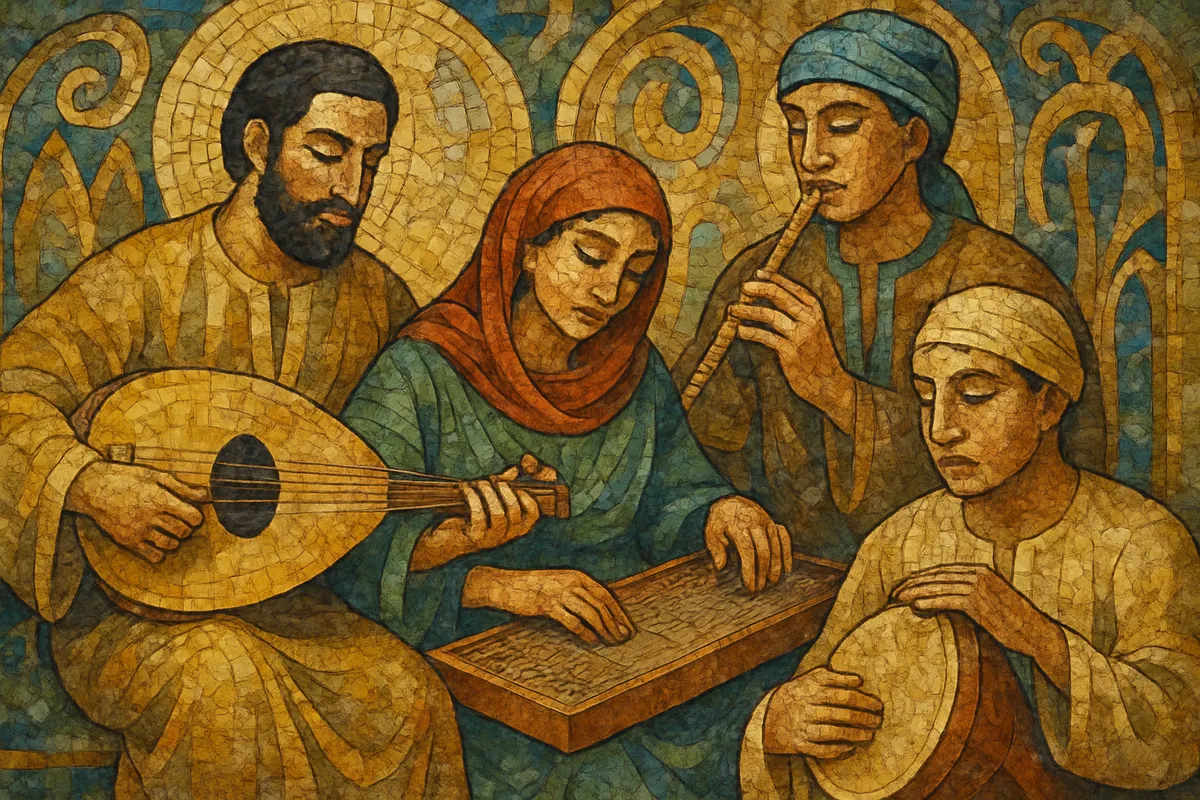Arabic music is the modal, largely non-harmonic art and folk music tradition of Arabic-speaking societies across the Middle East and North Africa. It is centered on the maqam system (a constellation of scales, characteristic melodic phrases, and modulation pathways) and the iqa'at cycle-based rhythmic system.
Its sound is defined by microtonal intervals (often featuring neutral seconds and micro-inflected pitches rather than equal-tempered quarter-tones), expressive melismas, and a heterophonic ensemble texture in which multiple instruments ornament the same melody simultaneously. Core instruments include the oud, qanun, nay, violin/kamanja, riqq, and darbuka/tabla, with larger firqa (orchestral) lineups common in 20th‑century Cairo. The tradition values poetic text-setting, extended improvisation (taqsim and layali), and the affective aesthetic of tarab—intense musical ecstasy and emotional transport.
Arabic musical practice predates Islam, with sung poetry and tribal song in the Arabian Peninsula. During the Abbasid Caliphate (8th–9th centuries) centered in Baghdad (in present-day Iraq), Arabic music was theorized and refined. Scholars and musicians absorbed and systematized knowledge from Ancient Greek theory, Persian court music, and Syriac and Byzantine liturgical traditions. Key treatises codified modal thinking that would later be known collectively as maqam.
From the 9th–15th centuries, Arabic musical culture spread widely via trade, scholarship, and empire, shaping and being shaped by regional courts and urban centers. In Al‑Andalus (Islamic Iberia), a distinct repertory developed whose legacy survives in North African Andalusian traditions. Modal organization, poetic forms (like muwashshahat), and refined ensemble practices took root across the Maghreb and the Levant.
Centuries of interaction with Ottoman musical culture led to shared modal concepts and repertoires, while distinct regional Arabic schools crystallized in Egypt, Syria, Iraq, the Levant, and the Arabian Peninsula. The takht (small chamber ensemble) became a standard performance unit, featuring oud, qanun, nay, kamanja (violin), and riqq.
With the rise of recording, radio, and film in Cairo and Beirut, the 1920s–1970s saw a Golden Age. Composers and singer‑composers such as Mohamed Abdel Wahab, Umm Kulthum, and Riyad al‑Sunbati expanded forms (sama'i, longa, qasida) into lush firqa orchestrations while preserving maqam-based melody and iqa'at rhythms. Tarab aesthetics flourished in extended live performances that balanced composition with improvisation (taqsim, layali, and mawwal).
Since the late 20th century, Arabic music has interfaced with global genres—jazz, pop, hip‑hop, and electronic music—while maintaining core modal and rhythmic identities. Local innovations (e.g., Egyptian mahraganat) and diasporic exchanges have produced new hybrids, and scholarly/classical traditions (e.g., Iraqi, Syrian, and Egyptian art music) continue through conservatories, festivals, and archival revival projects.


